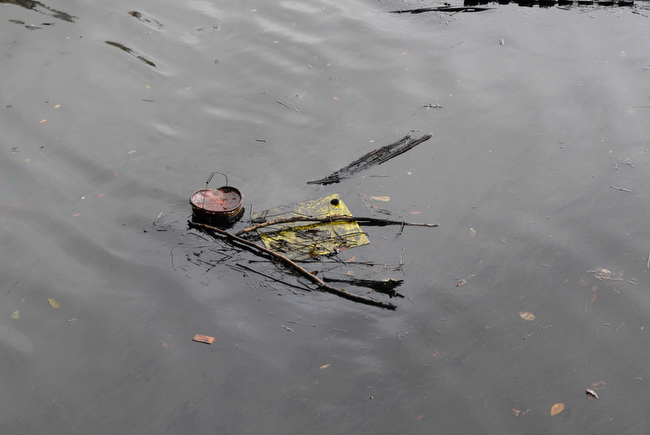
When the Gowanus Canal flooded the surrounding area during Hurricane Sandy, bacteria and disease-causing pathogens spiked to alarming levels unsafe for human exposure, but toxic pollutants were not found at high levels, said officials from the U.S. Environmental Protection Agency at a meeting at Public School 32 in Carroll Gardens on Monday night. The EPA organized the public forum to discuss cleanup after the storm and a host of Gowanus-related issues.
Because of the dangers posed by mold, bacteria and other contaminants, the EPA suggests that people who are still cleaning up from Sandy flooding use protective boots, goggles, gloves, an N-95 respirator and wear long pants and a long shirt. Local State Assemblywoman Joan Millman suggested people check with their doctors to discuss cleanup activity, and that some should consider getting a Tetanus shot.
The EPA Director for New York and New Jersey, Judith Enck, who lives five miles from the canal, said she was very concerned about contamination and pollution from flooding of the Gowanus. As an EPA federal Superfund site, the canal is ranked as one of the most polluted waterways in the nation.
When Enck walked around the canal after the storm, she said she was surprised by the brightly colored oil slick floating in the water.
“I’ve seen a lot of petroleum sheens in my day,” Enck said. “This was an alarmingly bright color.”
The oil came from a wide variety of sources, including basements of homes and large commercial buildings from Brooklyn to lower Manhattan that flooded, spilling nearly one million gallons of stored heating oil into the flood waters, the officials said.
When an EPA technician tested the Gowanus flood waters, the results were not as serious as expected, Enck said.
Water from the ground floor of a flooded building on Third Street was tested. Toxicity levels were negligible, Enck said. However, bacteria levels were very high.
The bacteria will die in time, and with sun exposure.
“It does not live forever,†Enck said.
Another thing for Sandy cleaners to think about: According to the EPA, mold has very likely invaded anything that was under water for two days or more; yet another reason to proceed with caution.
“Mold will likely emerge as a major issue,” Enck said.
When the EPA and state environmental officials opened the floor to questions, local residents and environmental activists turned the spotlight to the controversial condo development planned for the banks of the Gowanus Canal. The Lightstone Group is planning to build 1,000 apartments, and is asking the city for a zoning modification before moving forward.
City Councilman Brad Lander and others have taken to lobbying against the development.
“You can’t put 1,400 residents in an area that floods with sewage, with water that isn’t safe to touch,” said local resident and environmental activist Marlene Donnelly.
Carroll Gardens blogger Katia Kelly (from Pardon Me For Asking) brought up the issue of sewage overflows in the Gowanus after every rain event, not to mention the hurricane. The city is under a state court order to reduce the overflows of its aged system by 35 percent.
“We are very lucky this storm wasn’t accompanied by 10 inches of rain,†Kelly said.
Even after the city improves its sewage drainage system, in compliance with the court order, “we are still going to have an incredible amount of raw sewage going in to the Gowanus Canal,” Kelly said.
City Councilman Lander said Sandy changed his thinking on development on the banks of the Gowanus, and near waterways in general.
The city has a host of vital issues to address post-Sandy, Lander said. Flood maps and zoning regulations near the water will be reviewed and debated, he said.
“I have no doubt that there is climate change and that we need to address a whole level of climate-change issues and environmental policies,” Lander said.
“We need to look at and question any development near the water in the city,” Lander said.
It was before Halloween that Hurricane Sandy pounded New York City and New Jersey with 14-foot floodwaters. And here it is, nearly December, that serious effects and concerns related to the storm continue to ripple over the city, and one’s consciousness, like so many waves.
